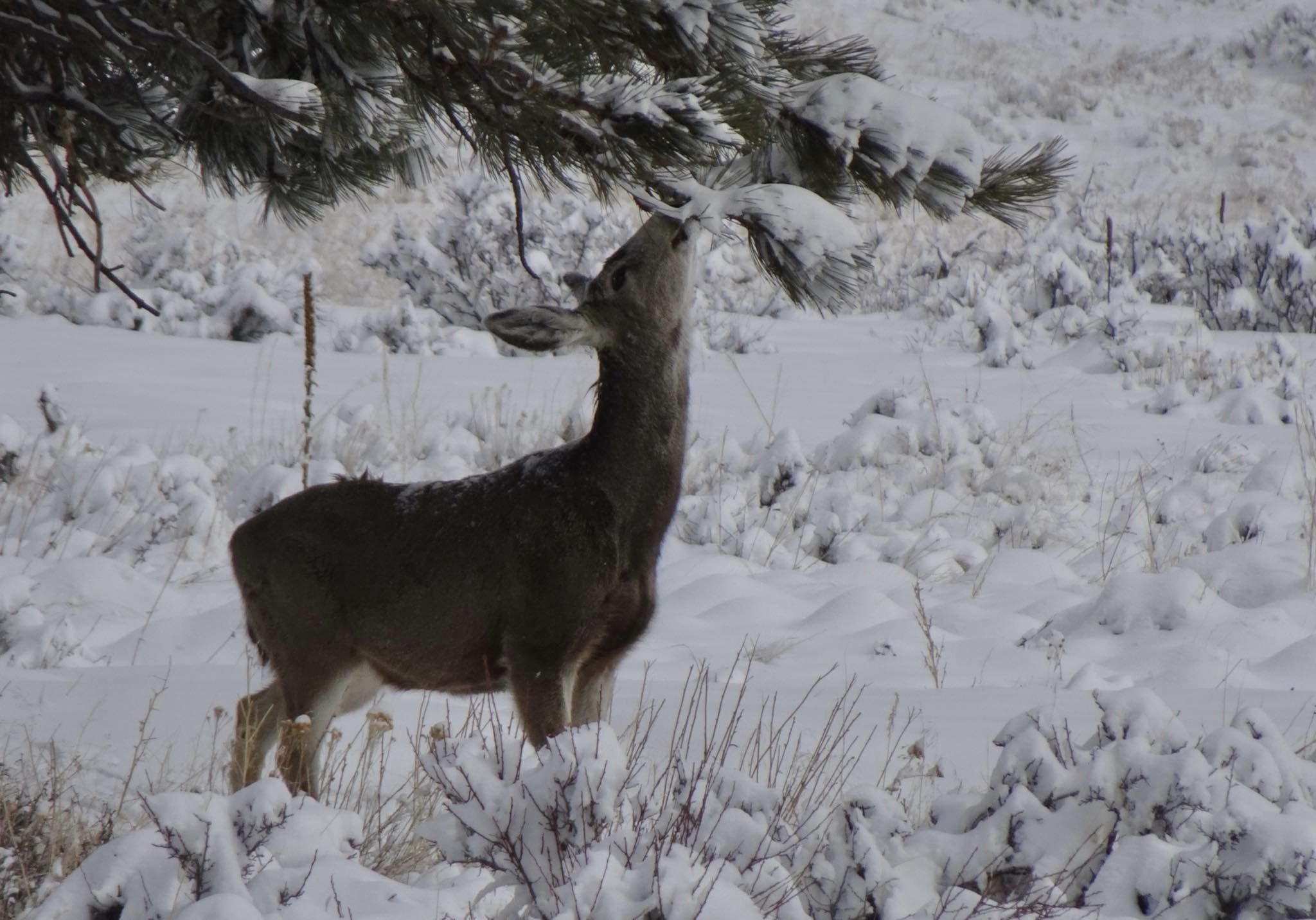Wildlife Wednesday -- Mule Deer Digestion
By Andy Ames
Mule deer adapt their diet to match the season. Summer is the time of plenty- a time for rich, high carbohydrate leaves and forbs (flowering plants). This allows deer to bulk up and store fat they will need to rely on later in the year. As greenery disappears, deer reduce their intake and switch to low-carb, high fiber browse of shrubs, twigs, and needles. As ruminants, deer, like elk, moose, sheep and cows, depend on a finely tuned mix of microbes to help digestion. These bacteria, Protozoa, and fungi also gradually adapt to handle the change of diet.
The danger of this strategy is that deer are not able to handle sudden changes of diet. This is one reason why it is important to remember never to feed wildlife. During the winter deer have switched away from more nutritious food and ingesting rich food like bird seed, corn, grain, or apples can actually lead to complications or even death. These foods can sit in a deer’s stomach undigested, creating acids and irritating the stomach walls. Under these conditions a deer can actually starve to death with a full stomach. What can we do to help deer through the winter? Planting or maintaining natural vegetation will give deer the best chance to successfully survive the winter. A good reminder why it is best to never mess with Mother Nature.
Mule deer buck browsing on Antelope brush, a common winter food since it is usually accessible even in the snow.
Mule deer fawn nibbling a forb (flowering plant).
Mule deer doe browsing from a Juniper.
Browsing on Ponderosa pine needles.
One of the hazards of browsing from a tree.
To reach even higher, Mule deer can rise up on their hind legs.
One more nibble.







